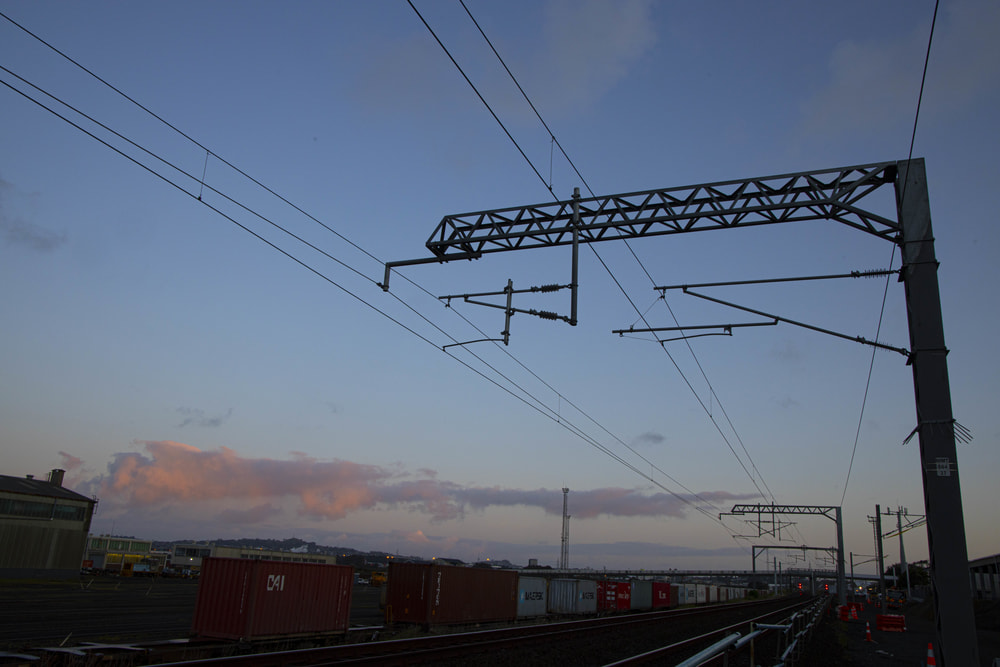Parts of the railway in NZ are electrified, where trains run from electricity.

Some electricity in overhead wires in New Zealand is a hundred times more powerful than the electricity used in homes.
Trains are run by electricity on the Auckland passenger network, the Wellington passenger network and between Hamilton and Palmerston North in the Central North Island.
The overhead wires in Auckland and the Central North Island carry 25,000 volts, which is a hundred times more powerful than the electricity used in homes.
The overhead wires in the greater Wellington area, including the Hutt Valley Line and the Johnsonville and Kapiti Lines, carry 1,500 volts.
Safety Advice
Always stay clear of electric wires, and never touch them or throw objects at them. The electricity can “jump” or pass through objects and you can be electrocuted without even directly touching the overhead wires.
In New Zealand people have been severely burned or have died from coming into contact with overhead electric wires.
This TV advertisement explains the dangers.
Overhead electric wires on the railway are live and dangerous even when trains are not running.
Contact with overhead wires can result in extreme burns and in most cases is likely to be fatal.
Overheight loads
Be extremely careful when you are around overhead wires with high vehicles, or any tall object such as ladders, poles or masts.
Level crossings have a height restriction and vehicles which exceed that height must not cross the level crossing.
The height restriction will be signposted at the crossing and varies for crossings around the country.
If your vehicle is higher than the height restriction sign-posted at the crossing, call (04) 474 2323 to make special arrangements.
In any emergency around overhead wires, call 0800 808 400.

 track
track